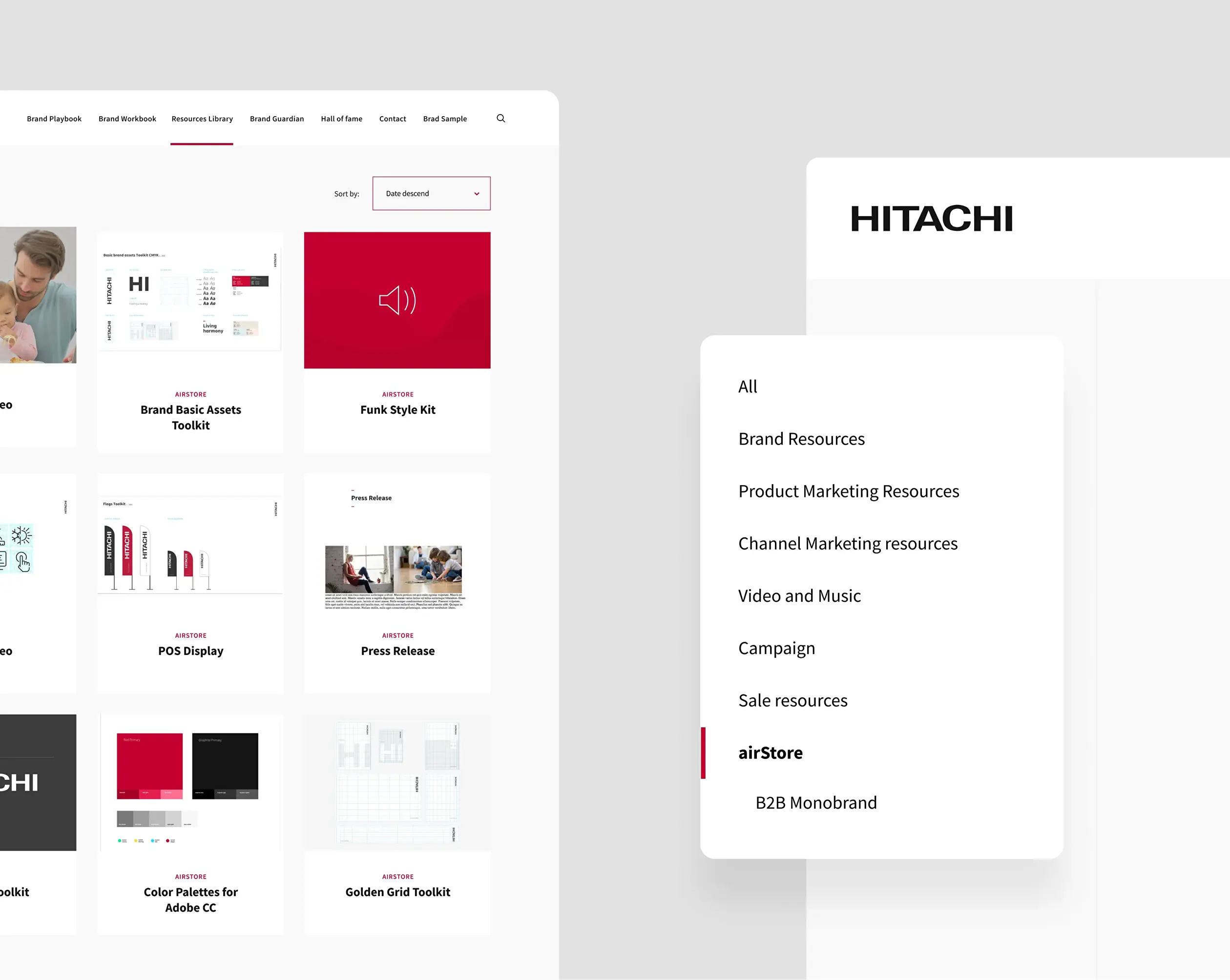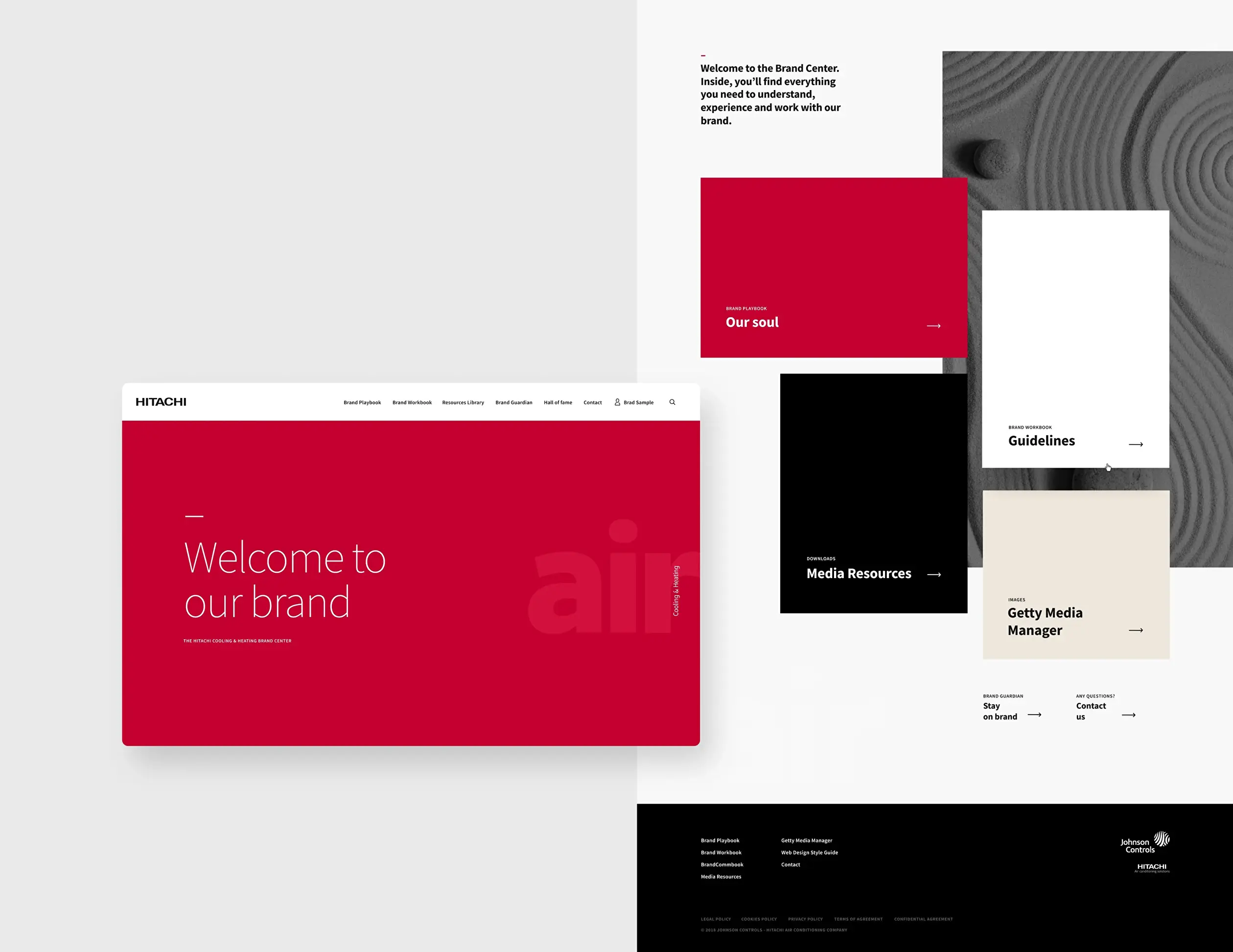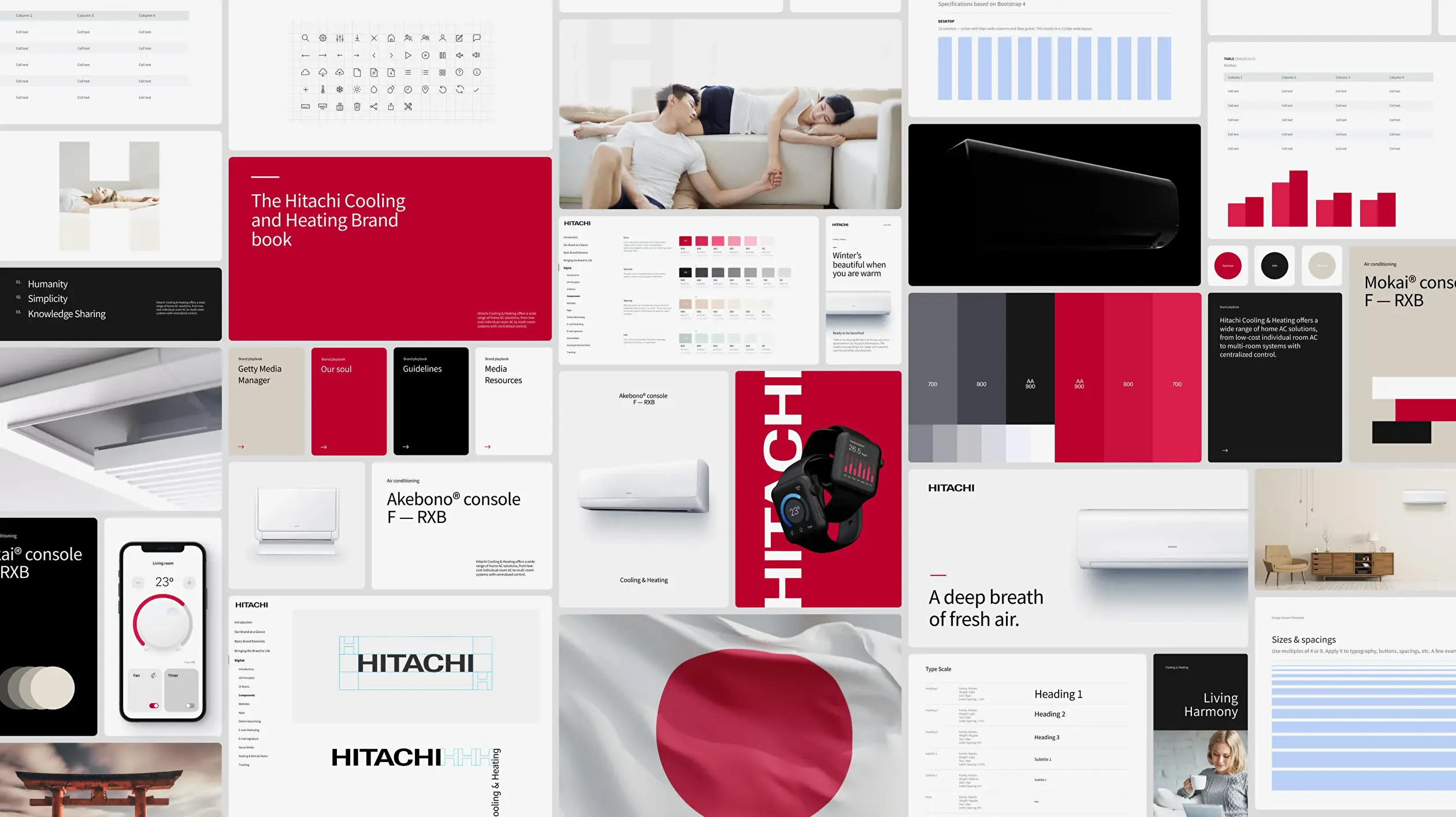Hitachi Brand Center.

What we do
Branding
UX/UI Design
Development
Design System
Training & Support
Overview
In the dynamic landscape of global operations, Johnson Controls–Hitachi recognized the need for a centralized platform to maintain brand consistency across diverse markets and teams. The JCH Brand Center was conceived as a strategic solution to align internal and external stakeholders with the company's brand ethos, ensuring uniformity in messaging, design, and communication.
With teams spread across continents and a myriad of external partners, JCH faced challenges in maintaining a cohesive brand identity. Disparate resources, inconsistent messaging, varied access levels, and the need for secure authentication led to inefficiencies and potential brand dilution. The objective was clear: develop a secure, scalable, and user-centric platform, integrated into the company's existing technology ecosystem, that serves as the single source of truth for all brand-related assets and guidelines.


Internally, teams gained autonomy and efficiency. Marketing, product, and internal communications departments experienced a clear reduction in time spent searching for or requesting assets. With all brand materials consolidated, validated, and categorized by user role, employees gained autonomy and confidence in the tools at their disposal. This not only accelerated day-to-day operations but also reduced dependency on brand managers and design teams for minor requests — freeing up valuable resources and reinforcing a culture of brand ownership across the organization.
Externally, agencies and partners onboarded more easily and aligned faster with JCH’s visual and strategic language. Standardized templates, pre-approved messaging, and curated resources enabled them to deliver campaigns and materials that reflected the company’s identity accurately — regardless of geography or market. The platform eliminated common inconsistencies and ensured that every expression of the brand, from recruitment banners to investor presentations, spoke with one voice.

Most importantly, the platform became a cultural anchor. It reinforced JCH’s commitment to coherence, transparency, and excellence — transforming branding from a set of rules into a shared responsibility and a source of pride.









